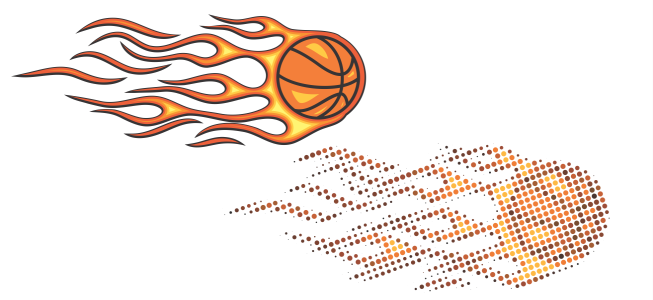Vector Mastery: A Comprehensive Exploration of Vector Effects in CorelDRAW

Introduction:
In the dynamic world of graphic design, precision and versatility are paramount, and no tool exemplifies these qualities quite like vector graphics. CorelDRAW, a powerhouse in graphic design software, introduces a sophisticated suite of Vector Effects, elevating the designer’s ability to create intricate, scalable, and visually compelling compositions. In this extensive exploration, we delve into the world of Vector Effects in CorelDRAW, unraveling their functionalities, applications, and the transformative impact they bring to the canvas.
Understanding Vector Effects in CorelDRAW:
- Defining Vector Effects: Vector Effects in CorelDRAW are a collection of tools and features designed to manipulate vector graphics. Unlike raster images, which are pixel-based and resolution-dependent, vector graphics are defined by mathematical equations, allowing for infinite scalability without loss of quality.
- Types of Vector Effects: CorelDRAW’s Vector Effects encompass a diverse range of options, catering to different design needs. From basic transformations like scaling and rotation to more advanced features such as envelope distortion and perspective effects, the Vector Effects toolbox is extensive and versatile.
- Advantages of Vector Effects: Vector Effects bring a host of advantages to the design process. They empower designers to achieve precision in transformations, create dynamic and fluid designs, and maintain the integrity of vector graphics across various applications.
Basic Vector Transformations:
- Scaling and Rotation: Fundamental to vector design, scaling and rotation effects in CorelDRAW allow designers to resize and reorient vector elements with ease. Maintaining proportional scaling ensures that the original design intent is preserved.
- Skewing and Mirroring: Skewing introduces dynamic slants to vector elements, while mirroring creates symmetrical reflections. These effects contribute to the diversity of design possibilities, from dynamic compositions to balanced layouts.
Envelope Distortion and Perspective Effects:
- Envelope Distortion: Envelope distortion in CorelDRAW enables designers to mold vector objects within custom shapes. This powerful tool allows for the creation of intricate and organic forms, adding a layer of sophistication to designs.
- Perspective Effects: Vector graphics can be manipulated to simulate perspective, giving the illusion of depth and dimension. Perspective effects are particularly useful for creating realistic renderings of three-dimensional scenes and objects.
Artistic Vector Effects:
- Artistic Media Tools: CorelDRAW’s Artistic Media tools allow designers to apply brush strokes, textures, and dynamic effects to vector lines. This feature introduces an organic and hand-drawn aesthetic to vector designs.
- Contour and Blend Effects: Contour effects add depth by creating outlines around vector shapes, while blend effects seamlessly transition between two or more objects. These artistic tools contribute to the visual richness of vector compositions.
Text and Typography Effects:
- Text on a Path: Vector Effects in CorelDRAW include the ability to place text along a predefined path. This dynamic feature is invaluable for creating curved or circular text that conforms to the contours of shapes.
- Drop Shadows and Outlines: Designers can apply drop shadows and outlines to vector text, enhancing legibility and visual impact. These effects contribute to the overall design aesthetic while maintaining the scalability of vector elements.
Advanced Vector Effects:
- Extrusion and Beveling: CorelDRAW’s advanced Vector Effects extend to the realm of three-dimensional transformations. Extrusion and beveling effects add depth and dimension to vector shapes, creating realistic and visually striking designs.
- Transparency and Blending Modes: Vector elements can be made translucent using transparency effects, allowing for layered and nuanced compositions. Blending modes further enhance the interaction between vector objects, creating unique and visually captivating results.
Combining Vector Effects with Other Tools:
- Integration with CorelDRAW Tools: Vector Effects seamlessly integrate with other CorelDRAW tools and functionalities. Designers can combine the application of effects with artistic media, text, and other design components to create cohesive and visually striking compositions.
- Masking and Clipping: CorelDRAW allows designers to use masking and clipping techniques in conjunction with Vector Effects. This synergy enables the creation of complex visual compositions with seamless transitions and layered effects.
Collaboration and File Sharing:
- Vector File Compatibility: When collaborating on vector-rich projects, designers should ensure compatibility across different vector file formats. This guarantees that vector effects are applied consistently, regardless of the software used.
- Exporting Vector Designs: Designers can export vector designs with applied effects, ensuring that the visual enhancements are retained when sharing files with clients, collaborators, or across different platforms.
Best Practices and Tips:
- Layer Organization: As vector designs become more complex with the application of effects, maintaining a well-organized layer structure is crucial. Proper layer organization facilitates easy editing and manipulation of vector elements.
- Experimentation and Iteration: The iterative process of experimentation is key to unlocking the full potential of Vector Effects. Designers are encouraged to explore various effects, adjust parameters, and iterate to discover unique and compelling visual styles.
Conclusion:
Vector Effects in CorelDRAW empower designers to transcend the boundaries of traditional graphic design, unleashing a world of precision, creativity, and scalability. From basic transformations to advanced three-dimensional renderings, the Vector Effects toolkit offers a comprehensive set of tools for designers to craft visually stunning and dynamic compositions. As the design landscape continues to evolve, Vector Effects stand as a testament to CorelDRAW’s commitment to providing designers with tools that inspire creativity, encourage experimentation, and enable the crafting of designs that captivate audiences with unparalleled precision and impact. Mastering the art of Vector Effects in CorelDRAW opens doors to a realm where every line, curve, and form is a testament to the designer’s vision and the limitless possibilities of vector graphics.




